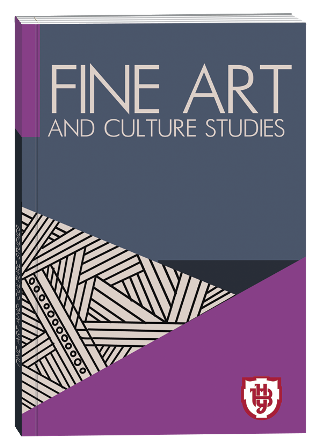FIGURATIVE-STYLISTIC FEATURES IN THE SYSTEM OF ARTISTIC PICTORIAL PRINCIPLES OF CHINESE PAINTING OF THE LATE 20TH – EARLY 21ST.
DOI:
https://doi.org/10.32782/facs-2024-5-22Keywords:
pictorial artistic principles, Chinese painting of the late 20th – early 21st centuries, artistic imagery, figurative and stylistic features of painting, artistic language of paintingAbstract
The purpose of the study is figurative-stylistic features in the context of the system of artistic pictorial principles of Chinese painting of the late 20th – early 21st centuries. Methodology. The main method of analysis was figurative-stylistic. This allowed to generalize the author’s stylistic ideas in the context of historical styles (primarily, impressionism and realism). Since the evolution of Chinese fine art has formed a unique dynamic of polystylistic representation, this method allowed to compare, identify and interpret the artistic appeal as an element of the stylistic artistic mechanism (for example, to identify formal and compositional principles within the author’s interpretation of impressionism). Scientific novelty. A significant amount of Chinese professional scientific literature on the research issues was introduced into scientific circulation; The formal and compositional features of the development of the artistic language of Chinese painting in the second half of the 20th – early 21st centuries in the context of the functioning of the system of pictorial principles are investigated and generalized; the pictorial tendencies of graphicity and polystylism are identified and analyzed. Conclusions. The study shows that in Chinese painting the system of pictorial principles gives a more significant status to the symbolic characteristics of the artistic image. This is reflected in classical approaches (for example, in the treatise “Six Principles” by Xie He), and is also a sign of the formation of the Western school of xianghua, in the context of which the symbolism of Chinese art has acquired modern significance. We distinguish two parallel directions in the development of pictorial artistic principles as a system. The first direction is interspecific transformations of graphic and pictorial components of artistic language. As the second direction, we consider polystylism. This phenomenon arises as a result of reminiscences of Western European artistic heritage, experiments with stylistic trends, rethinking of forms and directions of traditional artistic experience.
References
Ван В. Тарасов В. Зображальні принципи у системі формальних рішень: межі репрезентації у сучасному живописі Китаю. Вісник Львівської національної академії мистецтв. 2023. №50. С. 59–70.
Ван В. Тарасов В. Категорія образності в дослідженнях образотворчого мистецтва Китаю другої половини ХХ – початку ХХІ ст.: китайський мистецтвознавчий дискурс. Вісник Харківської державної академії дизайну і мистецтв : зб. наук. пр. / за ред. Є. Котляра. Харків: ХДАДМ, 2022. №1. С. 109–118.
曾星月.中国画形式语言的探究与体会. 艺术大观. 2021第15期. 第31-32页.
高名潞.殊途同归近现代中国画之路.美术.1986. 第6期. 第48-51页.
李越. 平面构成对现代中国画创作的影响. 美术界. 2013. 第8期. 第67-69页.
刘晓丹.艾轩: 生命荒原中的凄美行吟. 收藏. 2007. 第12期. 第72-73页.
刘彦. “线” 的含义与性格—现代中国画视觉造型方式的转化. 美术观察. 2011. 第2期. 第66-69页.
陆虹. 感悟生命的艾轩. 东方艺术. 1996. 第2期. 第28-29页.
王立民. 中国意象油画作品中的线语言解读. 河南大学学报: 社会科学版. 2010. 第50(2)期. 第105-108页.
徐铭. 浅谈光与色对现代中国画创新的影响. 理论与创作. 2005. 第3期. 第124-125页.
许翠红. 解读艾轩油画作品《 栅栏》. 大众文艺: 学术版. 2011. 第24期. 第38-39页.
叶云龙. 绘画中的线性内涵与思考. 美术大观. 2005. 第12期. 第92-94页.
张晶. 浅谈当代中国油画风景画中的 “笔墨情趣”. 文艺评论. 2007. 第1期. 第89-91页.
张苑. 关于艾轩的十个话题. 艺术市场. 2004. 第6期. 第92-94页.
张云翼.中国画的 DNA—“笔墨”. 美术向导. 2012. 第3期. 第62-63页.
周亮. 中国画线条美的研究. 北方文学: 中. 2012. 第5期. 第87-93页.
朱其. 关于中国当代油画的两个基本问题. 中国美术馆. 2005. 第11期. 第57-58页.







